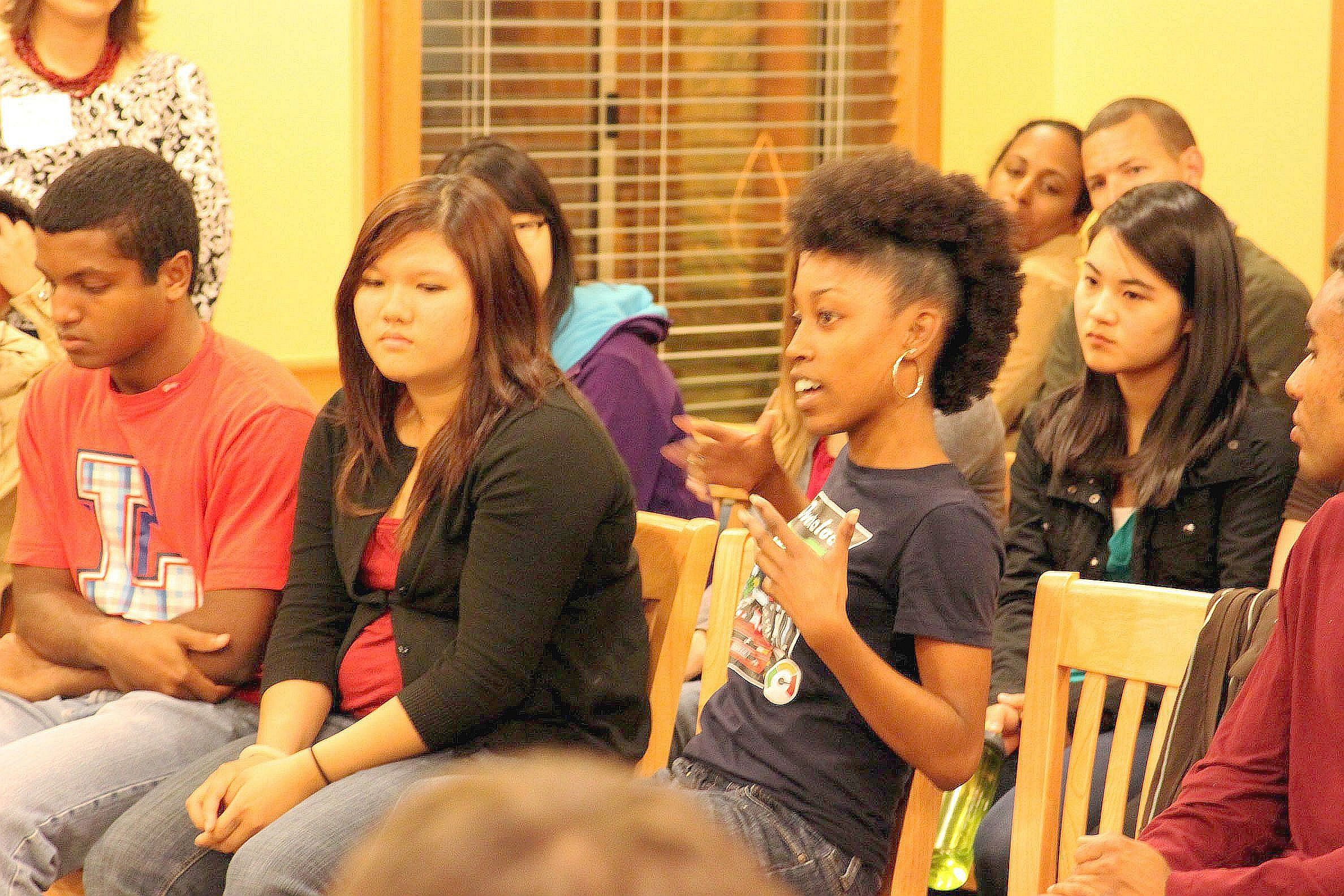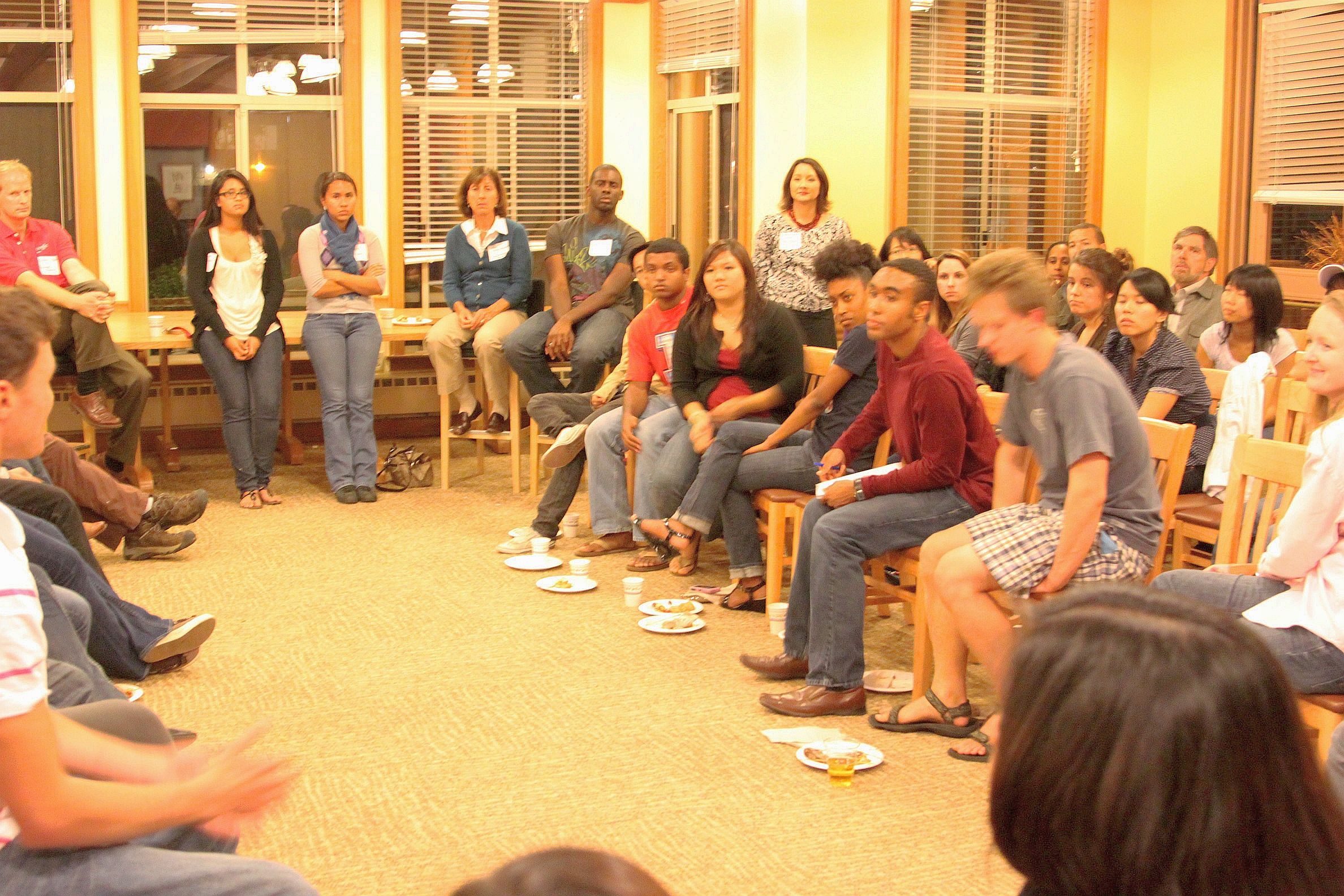

By Kendra Mitchell
Your child’s hopes for winning a coveted place in a charter school are pinned to a number drawn in a random lottery. Your heart races as the winning numbers are announced, then crashes into your stomach each time one more spot evaporates. A lucky few make it. Far more trudge home in tears, defeated in this gamble in American education.
With these last scenes of the documentary film Waiting for ‘Superman’ fresh on their minds, members of the Stanford and local community crowded into the dining room of Stanford’s Education and Society Theme House (EAST) on October 8 to discuss the film, following a special screening sponsored by EAST. The controversial film, directed by Davis Guggenheim, tells the stories of five students whose families desperately seek alternatives to their failing local schools.
The film screening and town hall meeting were the first community events held under EAST’s new education and society theme. The dorm, formerly known as the East Asian Studies Theme House, is led by School of Education Associate Professors Anthony Antonio and Christine Min Wotipka, who serve as its resident fellows.
Antonio and Wotipka invited several panelists to share their insights with the crowd. They included Chris Buja, founder of Redwood City’s Summit Preparatory School, one of the charter schools featured in the film; Leslie Airola-Murveit, a board member of the Las Lomitas School District and community activist; and Sonya Chaudhry, Diana Gonzalez and Yvorn Aswad-Thomas, Stanford undergraduates involved in various education reform efforts.
Wotipka launched the town hall discussion by asking the panelists their views on the documentary.
Aswad-Thomas, a senior who attended inner-city public schools in Los Angeles, described Superman as “an accurate portrayal of the hope and desperation in underserved school systems.” Most of the panelists said they were struck by the tenacity of the parents and students in the film and cited the film’s call for fixing the public school system as an opportunity to mobilize for change.
However, the panelists also cautioned against looking at the movie as representative of the whole public school system.
In Superman, Guggenheim often compares the U.S. with higher-performing countries such as Finland and Korea. But, as Airola-Murveit pointed out, the diverse student population in the U.S. presents unique teaching challenges absent from countries with more racially homogenous populations. Aswad-Thomas, whose mother is an educator, added that the film’s vilification of teacher unions is “a poor image of the good they do.”
Following the panelists’ opening remarks, audience members shared their reactions to the issues raised in the film. The discussion frequently returned to the causes of poor teacher quality. Although Superman focuses on efforts by teacher unions to prevent the removal of low-performing teachers, many in the audience wanted to know why bad teachers were hired in the first place.
Others wondered whether the lack of professional support and appreciation for educators has created teachers too disillusioned and burnt out to do their job well. “The system is turning people that would be good teachers into burnouts,” said freshman Saunders Hayes.
Parts of a larger picture emerged from the discussion. First, some felt energy was being directed toward the wrong goals. Buja said that he met resistance when he proposed a collaboration with the local school district to establish Summit High School. A visiting student who volunteered in schools in South Central Los Angeles recalls working with school staff members who only focused on graduating students from high school, instead of preparing them for college. “It’s time to get rid of split goals,” she concluded.
But are failing schools the sole reason for the current state of our education system? Or do issues of race and class in society need to be addressed before there will be any real change? As Wotipka put it, “Society is so important [in solving the problem] because education does not exist in a vacuum. You can’t keep throwing money at problems when the foundation is so unequal.”
For some, the implications of the movie were devastating. One parent whose child attends public school in a neighboring city, said, her voice quaking with frustration, “The title killed me. I can’t wait for Superman anymore.”
Reforming American education is a daunting task. But many participants hope Waiting for ‘Superman’, despite its faults, will inspire people to learn more about the problems facing public schools and to take action.
“People can be dynamic in their careers and work with others to improve education, no matter what they do,” asserted Aswad-Thomas.
To continue the conversation about education, visit http://east.stanford.edu.
Kendra Mitchell is a student intern with the School of Education’s External Relations team. She is a junior majoring in English and lives in East House.
Subscribe to our monthly newsletter.